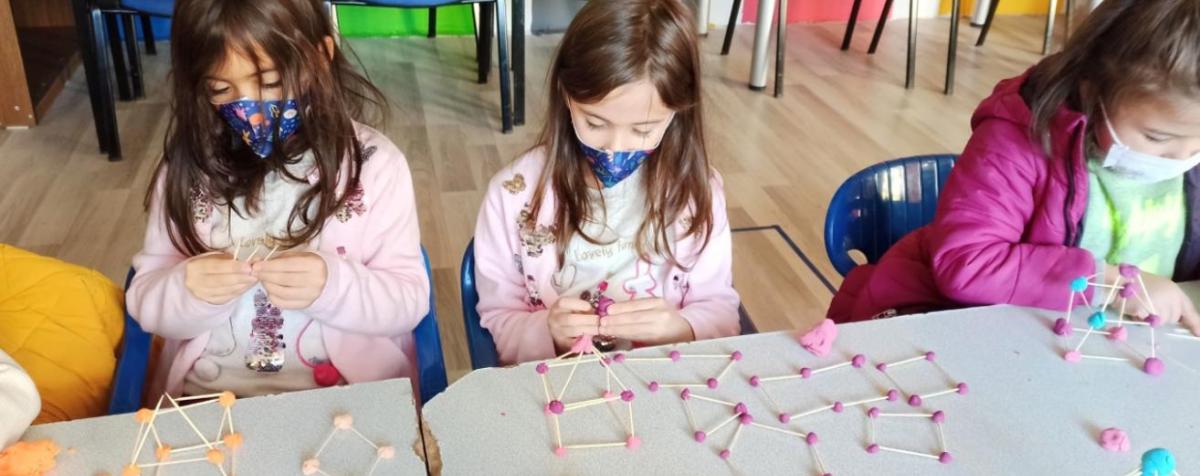Featured Publications
Learning trajectories in early mathematics instruction have received increasing attention from policymakers, educators, curriculum developers, and researchers. They are generally deemed useful for guiding curriculum standards, instructional planning, and assessment. However, the specific contributions of learning trajectories to education and children’s learning are unclear. We review research over the last five years to describe what is known and what still needs to be learned about methods of development, refinement, and validation of the goals, developmental progressions, and instruction of learning trajectories in early mathematics and possible advantages and disadvantages in the educational application of learning trajectories. Findings illustrate the variety of methods in creating and evaluating learning trajectories and generally confirm the validity of existing LTs, although not for all topics or implementations. Developmental progressions are generally replicable and useful for describing children’s knowledge and competencies with major disagreements about DPs infrequent and refinements building upon previous results successfully. Similarly, studies generally support the efficacy of instructional activities and teaching strategies grounded in the LT approach and the benefits of continual formative evaluation and refinement of such activities, with caveats concerning their limitations. Finally, comparative studies, especially those with rigorous designs, support the efficacy of the LT approach vs. other pedagogical approaches. https://rdcu.be/dYreg
Clements, D.H., & Sarama, J. (2020). Learning and Teaching Early Math: The Learning Trajectories Approach (3rd ed.). Routledge. https://doi.org/10.4324/9781003083528
The third edition of this significant and groundbreaking book summarizes current research into how young children learn mathematics and how best to develop foundational knowledge to realize more effective teaching.
Using straightforward, practical language, early math experts Douglas Clements and Julie Sarama show how learning trajectories help teachers understand children’s level of mathematical understanding and lead to better teaching. By focusing on the inherent delight and curiosity behind young children’s mathematical reasoning, learning trajectories ultimately make teaching more joyous: helping teachers understand the varying levels of knowledge exhibited by individual students, it allows them to better meet the learning needs of all children.
This thoroughly revised and contemporary third edition of Learning and Teaching Early Math remains the definitive, research-based resource to help teachers understand the learning trajectories of early mathematics and become confident, credible professionals. The new edition draws on numerous new research studies, offers expanded international examples, and includes updated illustrations throughout.
This new edition is closely linked with Learning and Teaching with Learning Trajectories–[LT]²–an open-access, web-based tool for early childhood educators to learn about how children think and learn about mathematics. Head to LearningTrajectories.org for ongoing updates, interactive games, and practical tools that support classroom learning.
Holland W. Banse, Douglas H. Clements, Crystal Day-Hess, Julie Sarama, Marisa Simoni & Julia Ratchford. (2020) Teaching moves and preschoolers’ arithmetical accuracy, The Journal of Educational Research, 113:6, 418-430, DOI: 10.1080/00220671.2020.1846484
Several teaching moves have been suggested to support young children’s simple addition and subtraction performance, including use of a number path, directly modeling addition and subtraction, using mathematical symbols, and modifying problem difficulty. In the present study, teacher-researchers implemented an early arithmetic activity, Big Fish Story, with dyads of 3 to 4-year-old students. As part of the implementation, the teacher-researchers used these teaching moves to support young children’s in-the-moment answers to simple addition and subtraction problems. We use session-level data (n = 94 sessions) nested in dyads to examine and compare the frequency with which the use of these teaching moves are associated with two types of student responses, in order to preliminarily identify teaching moves that may support young children’s performance on simple arithmetic tasks. We conclude with implications for the field and early childhood practitioners.
Clements, Douglas & Sarama, Julie & Baroody, Arthur & Kutaka, Traci & Chernyavskiy, Pavel & Joswick, Candace & Menglong, Cong, & Ellen, Joseph,. (2020). Comparing the efficacy of early arithmetic instruction based on a learning trajectory and teaching-to-a-target. Journal of Educational Psychology. DOI: 10.1037/edu0000633.
Although basing instruction on a learning trajectory (LT) is often recommended, there is little evidence regarding a premise of a LT approach—that to be maximally meaningful, engaging, and effective, instruction is best presented 1 LT level beyond a child’s present level of thinking. We evaluated this hypothesis using an empirically validated LT for early arithmetic with 291 kindergartners from four schools in a Mountain West state. Students randomly assigned to the LT condition received one-on-one instruction 1 level above their present level of thinking. Students in the counterfactual condition received 1-on-1 target-level instruction that involved solving story problems three levels above their initial level of thinking (a skip or teach-to-target approach). At posttest, children in the LT condition exhibited significantly greater learning, including target knowledge, than children in the teach-to-target condition, particularly those with low entry knowledge of arithmetic. Child gender and dosage were not significant moderators of the effects.
